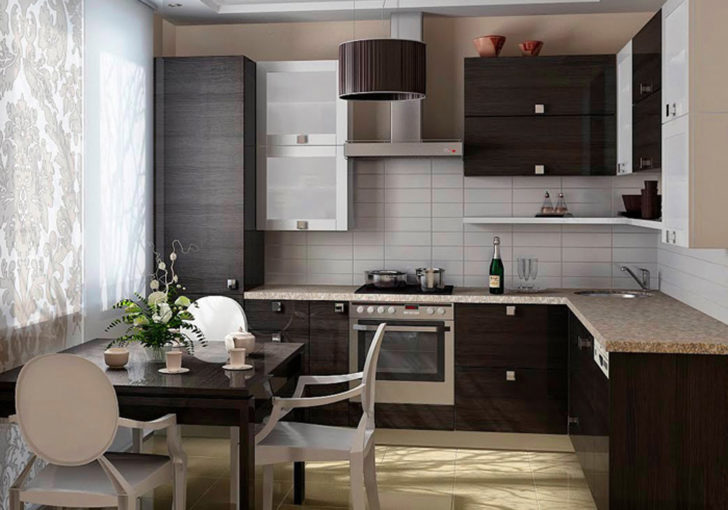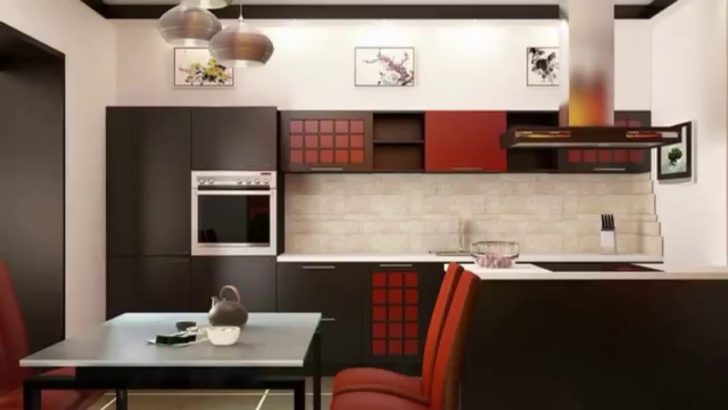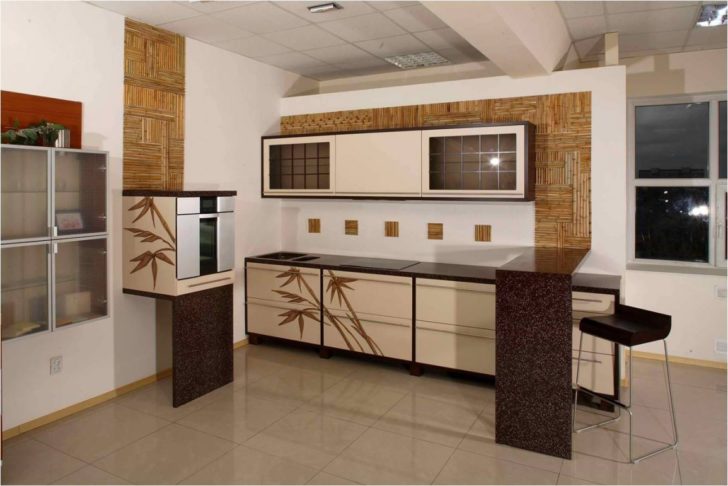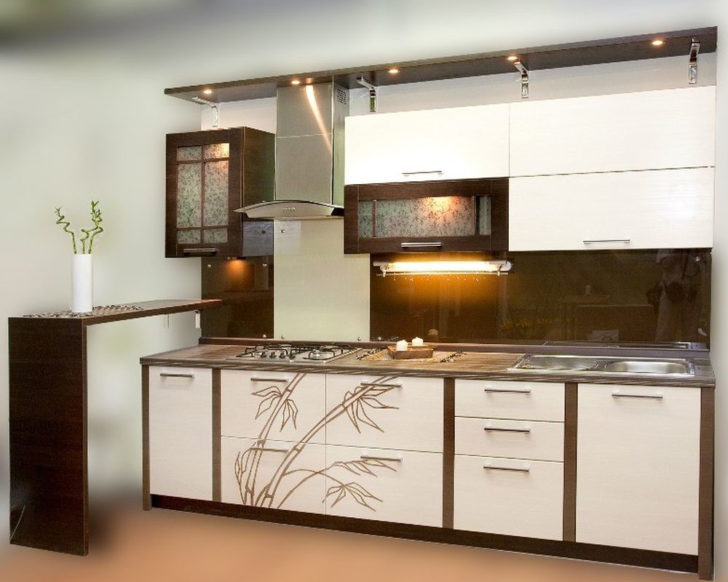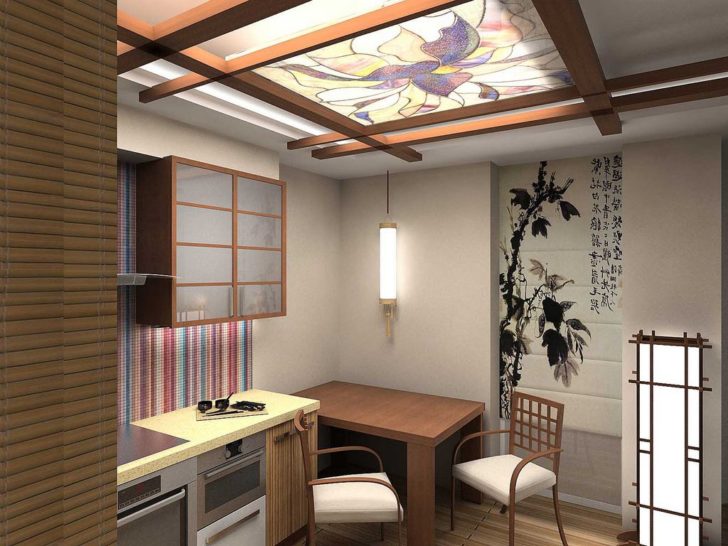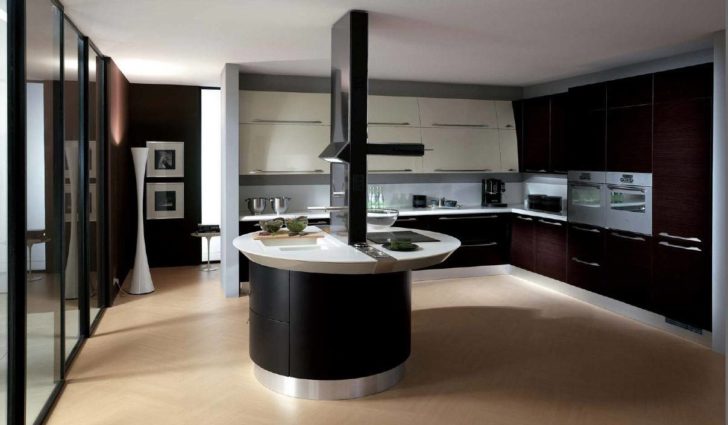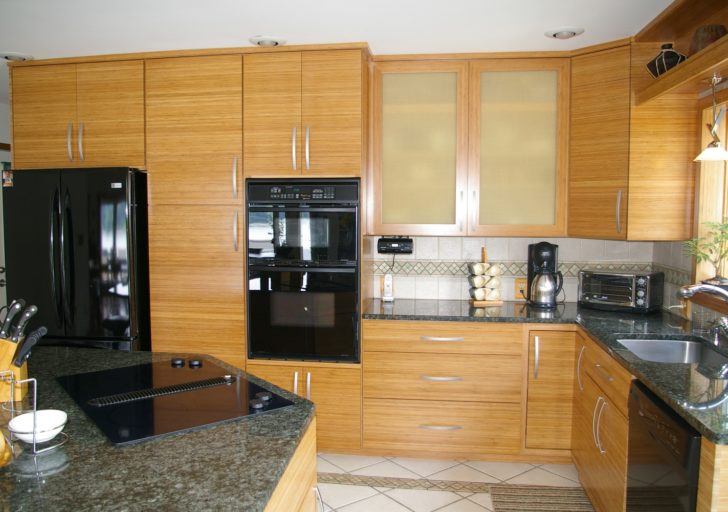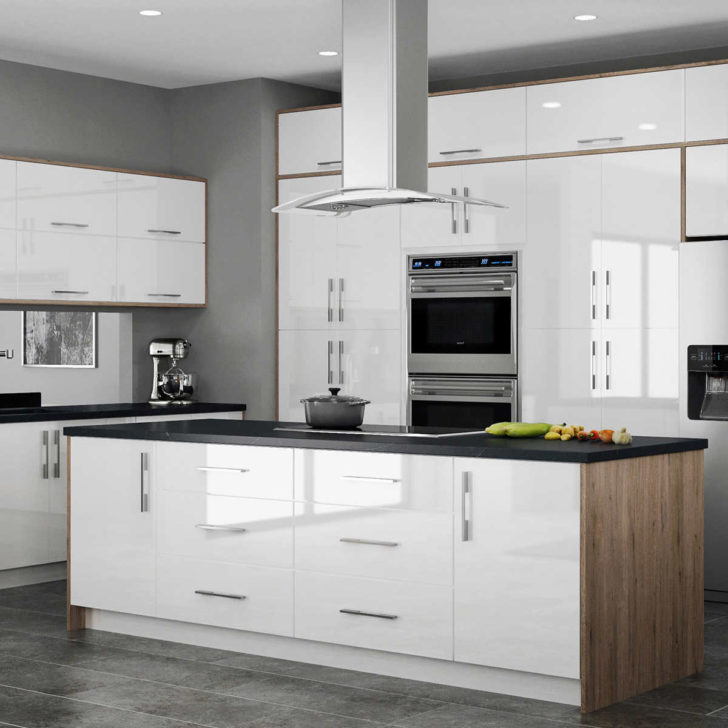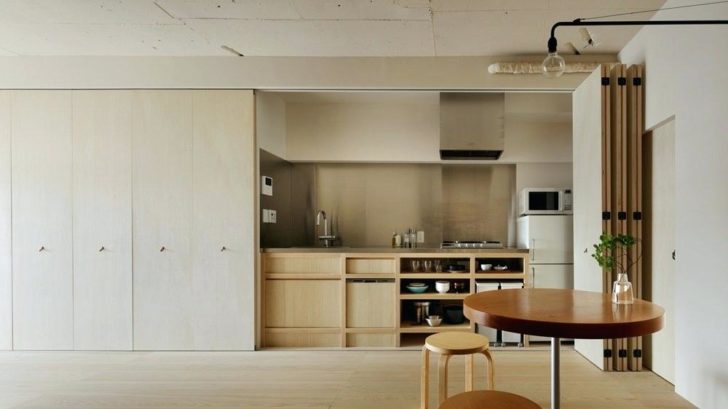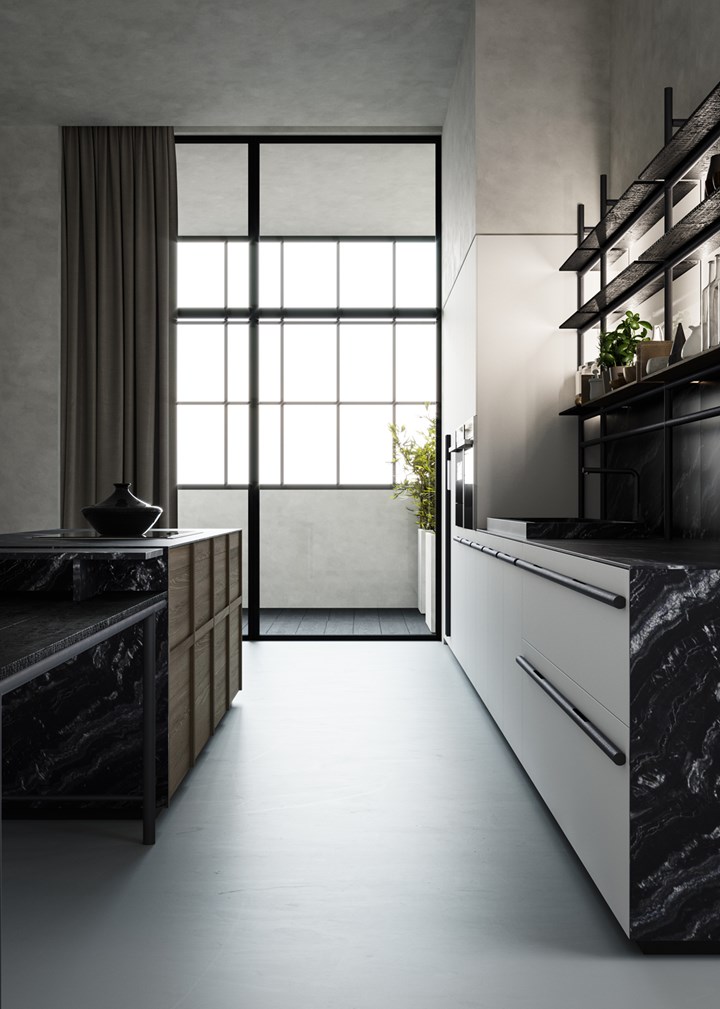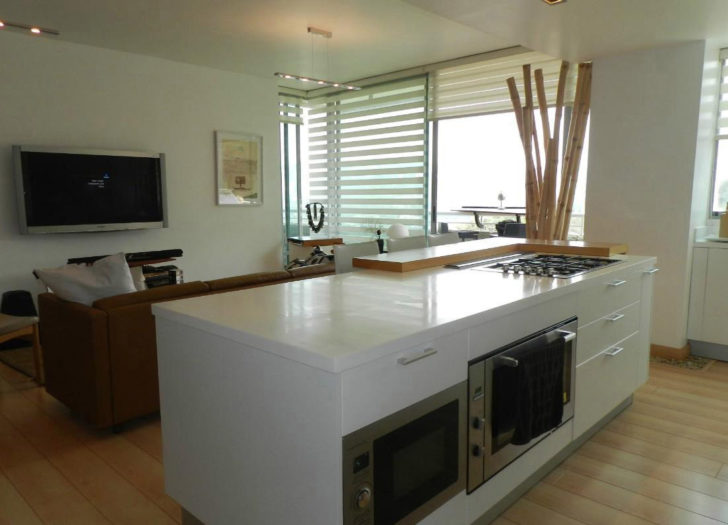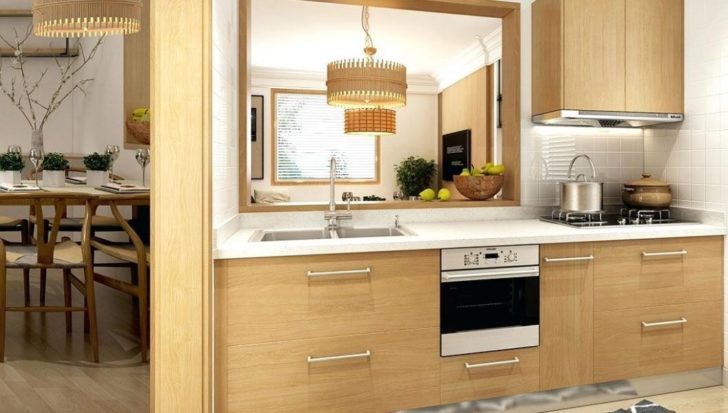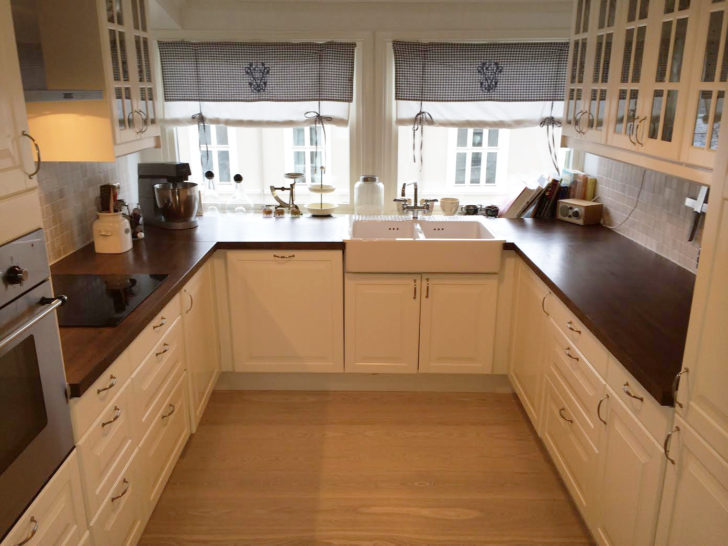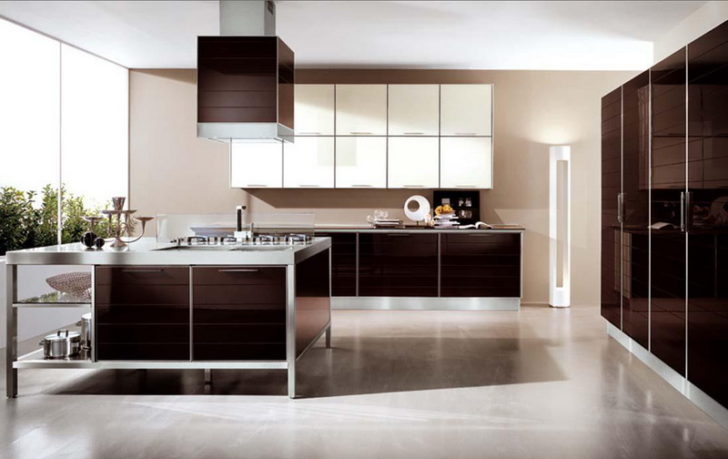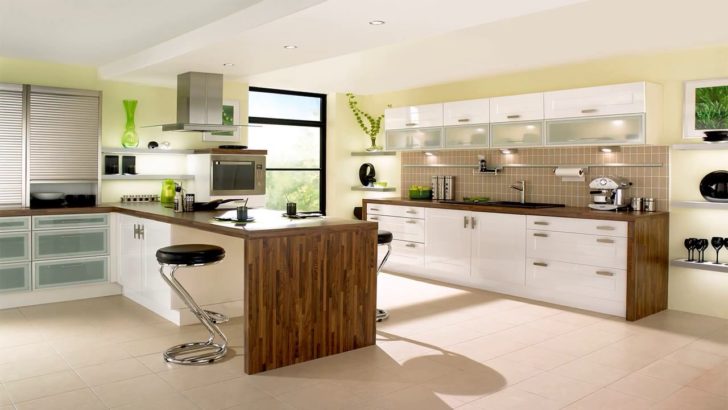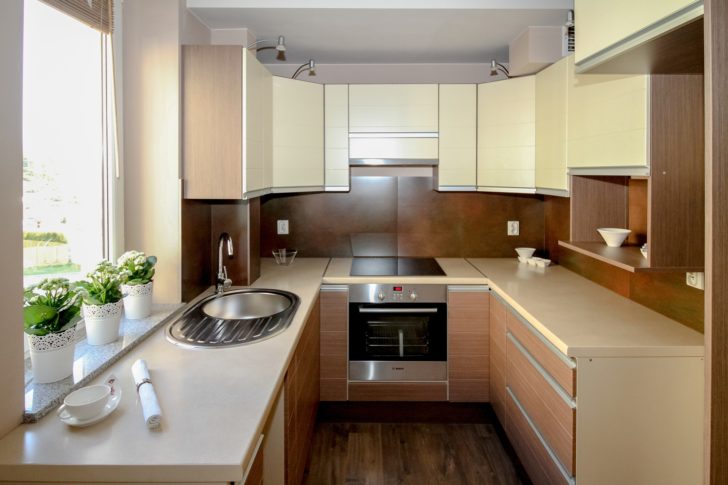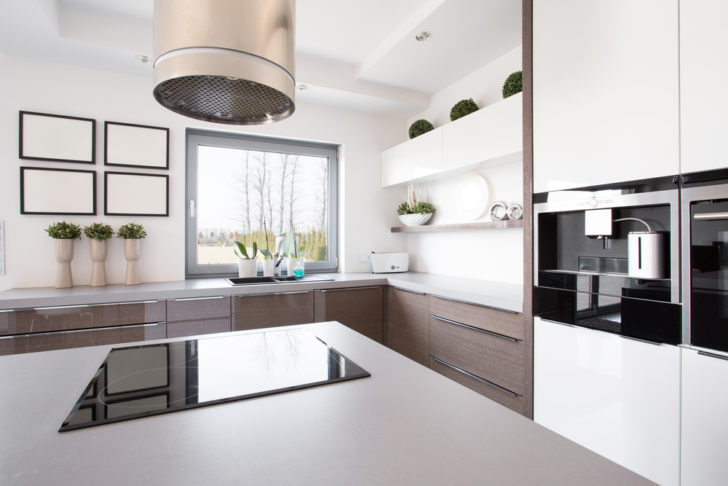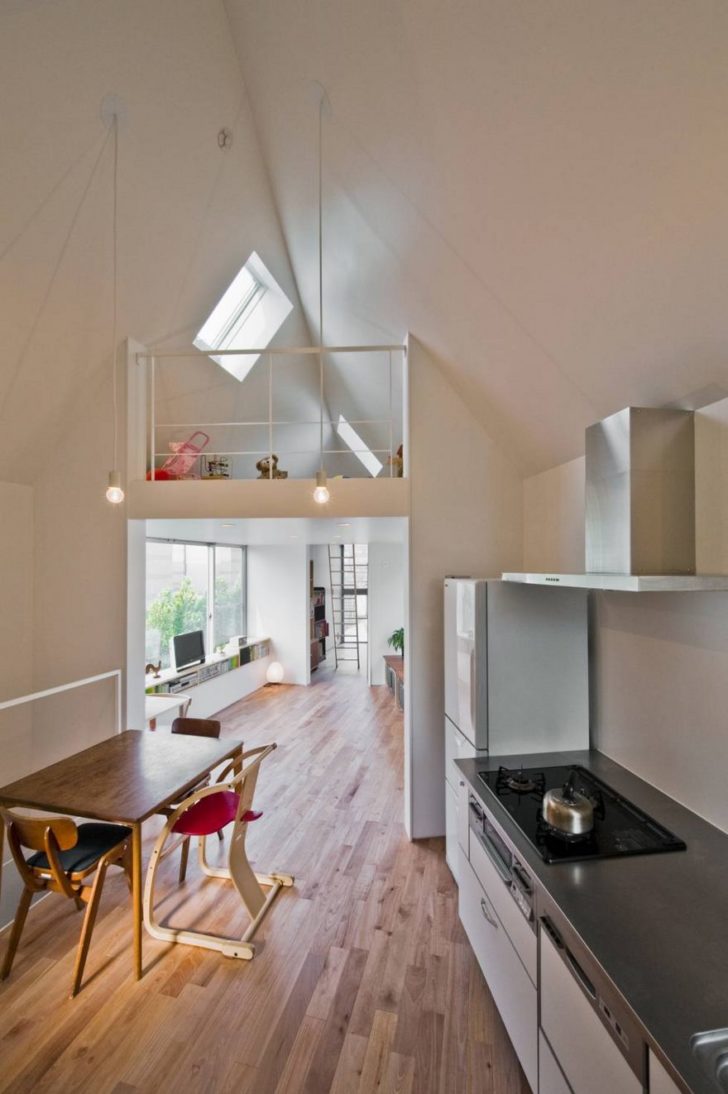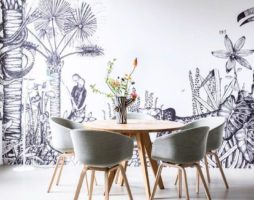Traditional Japanese-style kitchen design combines two ideas that seem to be completely opposite. However, they have harmoniously coexisted in Japanese art for centuries. It will be about Zen Buddhism and Shintoism, religious movements that forced Europeans to reevaluate the standards of modern architecture.

The values of Zen Buddhism and Shintoism are reflected in the appearance of the kitchen in the Japanese home. The aesthetic perfection of the interior turned out to be attractive to Europeans as well. What captivates us with the original island culture and why is its influence on modern interior design so palpable? And why exactly in the kitchen do elements of Eastern philosophy appear so naturally?
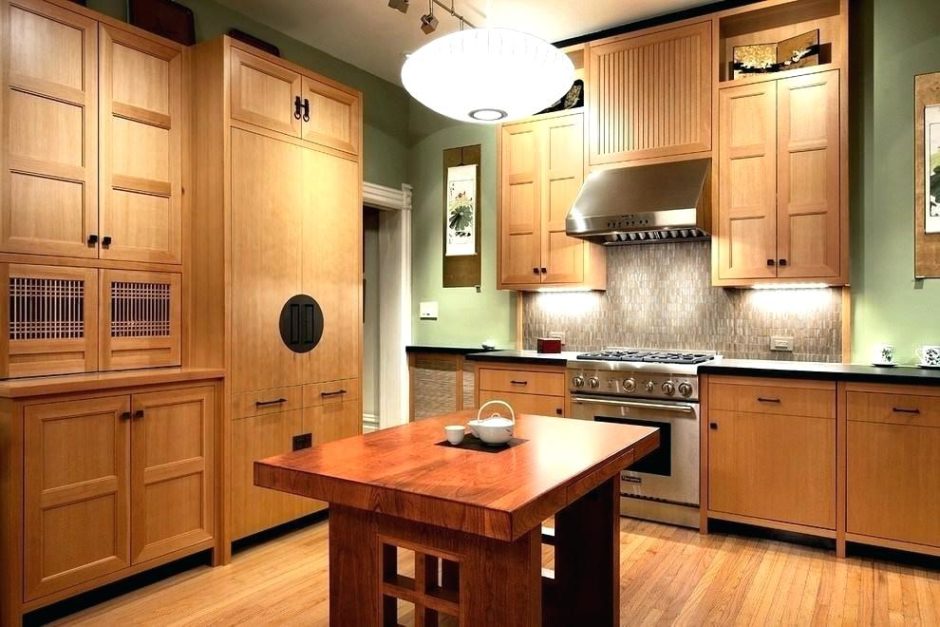
This article is an attempt to explain the phenomenon of the penetration of Japanese culture into modern design and give practical advice on designing a kitchen in accordance with a fashionable concept. Consider the signs of the Japanese style in the kitchen and photos of successful projects, as well as the logic of the zen interior, which will help you more confidently plan the renovation of your own apartment.
Japanese style kitchen philosophy
The religious traditions of the Japanese are quite peculiar. In Buddhism, they were close to minimalism, the art of seeing the beauty in the ordinary and looking for harmony everywhere - in big and small, within oneself and in the environment. Freed from the bright external tinsel, Buddhism on the islands took shape in a new direction - Zen Buddhism, and defined the refined asceticism of everyday life.
Another religious movement, Shintoism, is considered to be the official religion of Japan. It combines the worship of ancestors, the deification of the emperor and the spiritualization of things. A special attitude to antiques predetermines their role in interior decoration.

There is a third component, far from religion - a high level of technological development and a careful attitude to resources. Kitchens in Japan are literally stuffed with the latest home appliances that make housekeeping easier and save water, gas, and electricity without drawing too much attention to themselves.
All these ideas were reflected in the layout and decoration of the kitchen in the Japanese house - outwardly simple, incredibly functional and practical.
Learn Zen: contemplating Japanese-style kitchen design
A distinctive feature of the kitchen is its small size, but the room never seems cramped. The secret of freeing up space has long been revealed - it simply does not need to be cluttered. A Japanese-style kitchen set is always a minimum of furniture of the simplest forms, the absence of blank facades or their laconic design, smooth, clean surfaces. When we talk about clean surfaces of furniture in relation to the Japanese style of the kitchen (photo), we mean emptiness. Tabletops remain free. It's important, it's style.
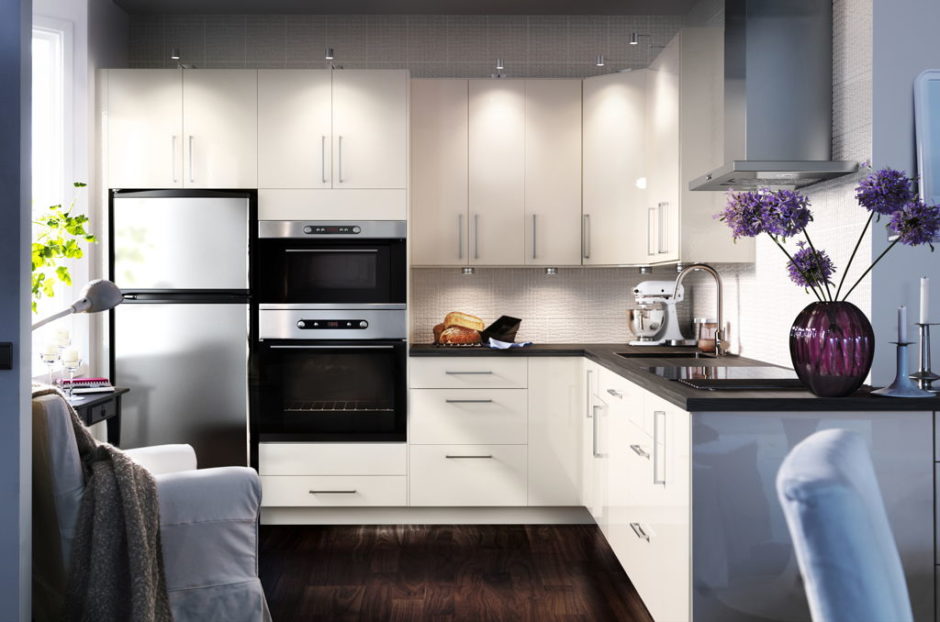
The space is expanded by open hanging shelves instead of cabinets, often of a cantilever design. However, they are not tightly packed. Where are all the kitchen utensils and products stored? In chests, closed cabinets and - attention - in built-in closets: this is the best way in terms of area / capacity.
Zen Buddhism elevated meaningful emptiness and open space to a divine category.
Modern realities are pushing us to embrace these Zen ideas and appreciate the ascetic aesthetic of the Japanese-style kitchen, which has become the standard of minimalism.
By the way, there is nothing easier than putting things in order in such a kitchen: put everything in the cabinets, ran a napkin over the countertop - that's it, perfect cleanliness! And cleanliness in Japan is synonymous with the word "beauty".
The Soul of Things or How to Decorate a Shinto Kitchen
Charm things
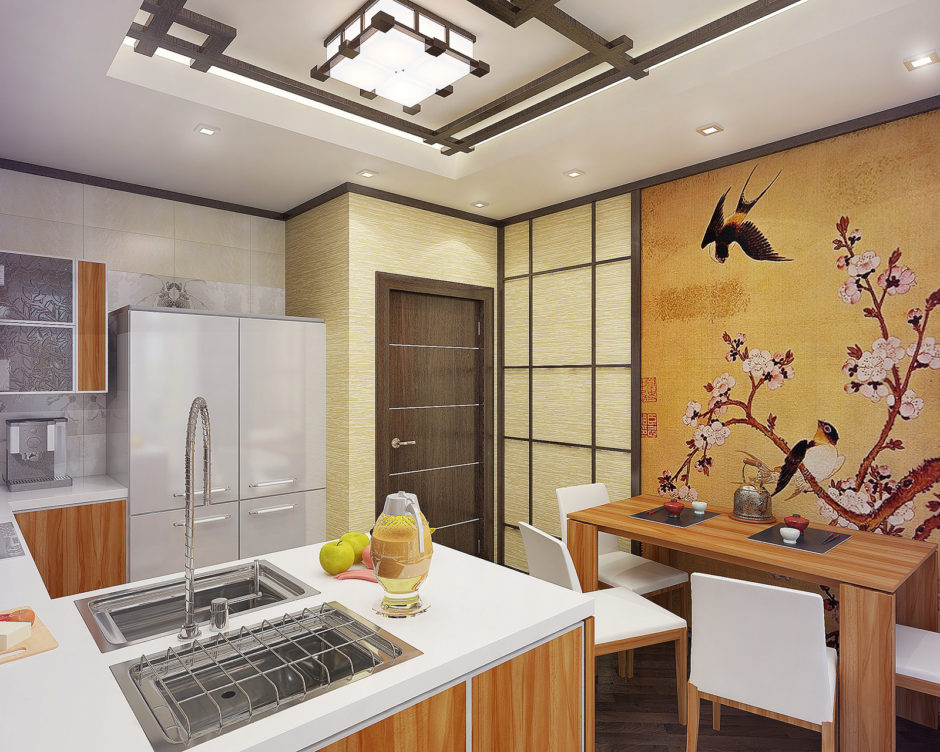
It has already been mentioned that Shintoism is closely connected with the cult of ancestors and the deification of things. Yes, yes, this is an echo of paganism. The traditional Japanese house is inhabited by spirits, and this cannot but be reflected in the design of the kitchen.
The best decoration of a Japanese-style kitchen is antique utensils: metal, wood or ceramic. She is treated with respect.
Do not try to polish or clean old dishes to a shine! The Japanese tremblingly protect the seal of time on the things they inherited. Patinated metal, darkened ceramics and worn wood retain the warmth of the touch of ancestors and serve as a kind of amulets in the Shinto tradition. When decorating an interior in an oriental style, a few antique gizmos will enhance its Japanese accent.
The second life of artifacts
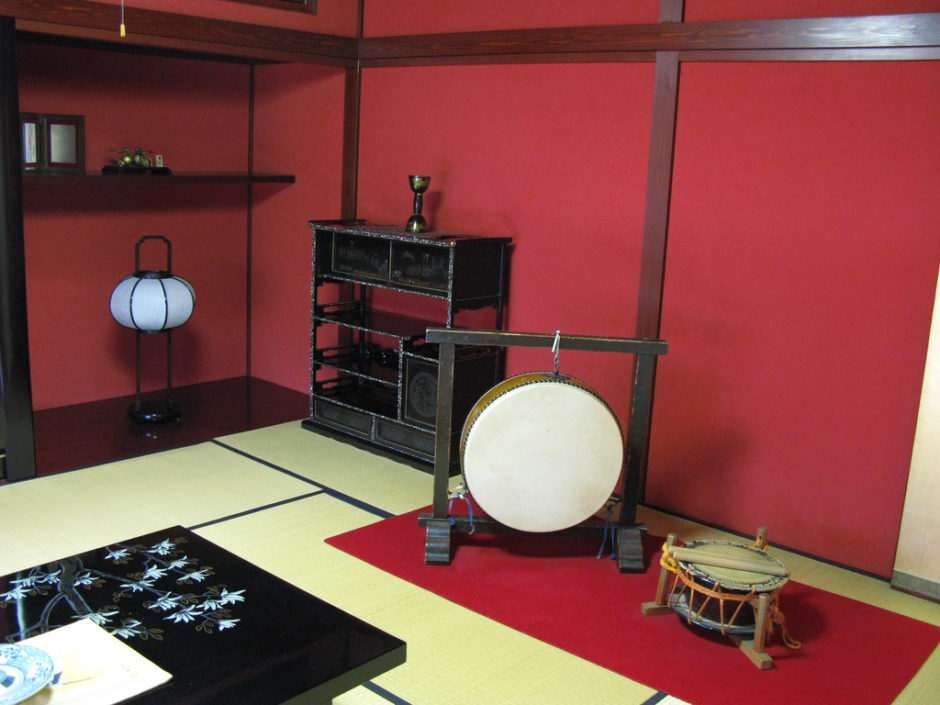
The Japanese don't like to throw things away. Only in Japan could they turn a broken dish into a work of art and admire it. The restoration technique is as follows: fragments of old porcelain are folded, and the seams and voids from the missing fragments are filled with a hardening mass, reminiscent of gold in color and texture. In exceptional cases, a gold alloy is used. Incredibly effective! Reminds at the same time of the technique of craquelure, and mosaic, and jewelry trinket in a gold frame.
You can create an original decor with your own hands - it's worth a try! Especially if the broken thing is dear to you and is associated with memories.
Knives in Japanese cuisine: honor and perfection
In the modern kitchen, you can see the heritage of the samurai - skillfully made blades. The steel blades of Japanese kitchen knives, unlike other attributes, must shine with a polished surface. This, by the way, does not apply to their frames: handles and covers.

A good set of Japanese kitchen knives, in addition to the practical function, enriches the interior design.
On the blades of traditional Japanese kitchen knives - Kasumi - a characteristic pattern is visible, reminiscent of a wood texture. These wavy strips are formed as a result of sharpening laminated steel. The most durable high-carbon layer is located in the center of the blade, and it determines the incredible sharpness of the blade.
The centuries-old blacksmithing skills embodied in Kasumi blades make them among the best Japanese kitchen knives.
Such a sharp tool is dangerous to store without protection, so sets of Japanese kitchen knives are usually sold with sheaths. Wooden and leather cases in the national style are distinguished by ergonomics, laconic shapes, noble material and impeccable quality of finish.
Some sets require storage in drawers, others are equipped with ready-made hinged structures. It is tempting to leave the Kasumi collection in plain sight, and this can be done by choosing a stable stand made of noble wood, which is sold with blades. If we are talking about a Japanese-style kitchen, its interior will only benefit from this.
Products of modern masters
Not only blades and artifacts can be used in kitchen design. The atmosphere is supported by accessories made in the national style. Ideally, these should be authentic pieces of applied art. It is very difficult to imitate the perfection of construction, the meticulousness of finishing, the harmony of form and color - all that distinguishes the products of the masters of the Land of the Rising Sun.
If you are faced with the task of enhancing the Japanese style of the kitchen, the photos will tell you what you can pay attention to. Will definitely fit:
- blinds, ideally bamboo;
- paper roller blinds;
- lamps made of wooden slats;

- lamps with paper shades;
- partitions in the form of a square crate;
- sliding partitions;
- landscape drawings made in the characteristic manner of sansui or sesshu;
- tableware in japanese style.
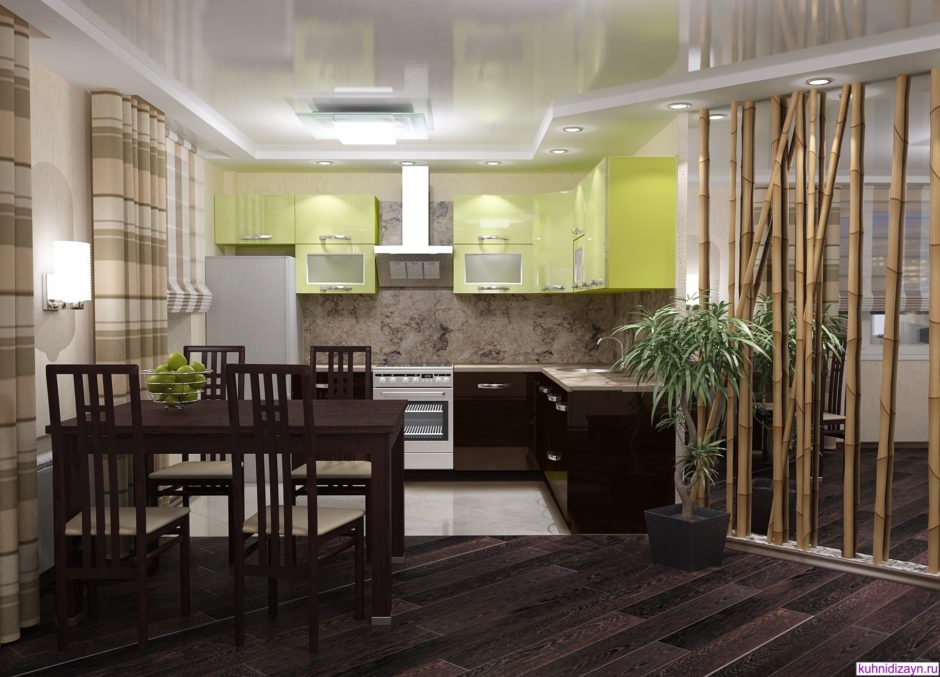
It is easy to see that of all of the above, only painting can be attributed to an exclusively decorative addition. The rest of the items are functional, but made in the tradition of impeccable taste and with Japanese care.
When choosing, one should be guided by the principle "the less - the better." Of all the accessories, you should choose only those that you cannot refuse.
Stylish planning solutions
In a small room, furniture can be placed along the walls; in a more spacious room, an island zone can be distinguished.

Sliding or accordion-folding light partitions (shoji) that completely cover the cooking area can become a specific solution for the studio.
Latticed partitions can separate the dining area from the stove. Their oriental flavor and layout examples are presented below, in the photo of a Japanese-style kitchen.
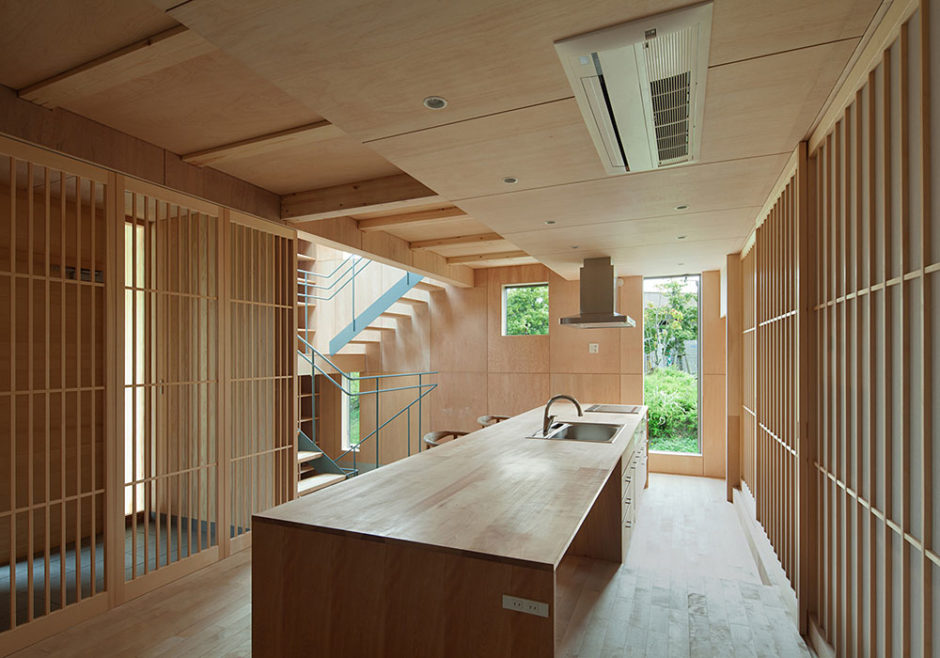
Japanese accents in the kitchen
Classic Japanese cuisine is decorated in a contrast of light and dark. In a real project, you can deviate from this rule, but some bright details in the decoration of the ceiling and walls can accurately indicate the style and subordinate the rest of the decoration to it.
The white ceiling is nice, but the dark wooden batten imitation on it visualizes the traditional construction of a light frame house typical of Japan.
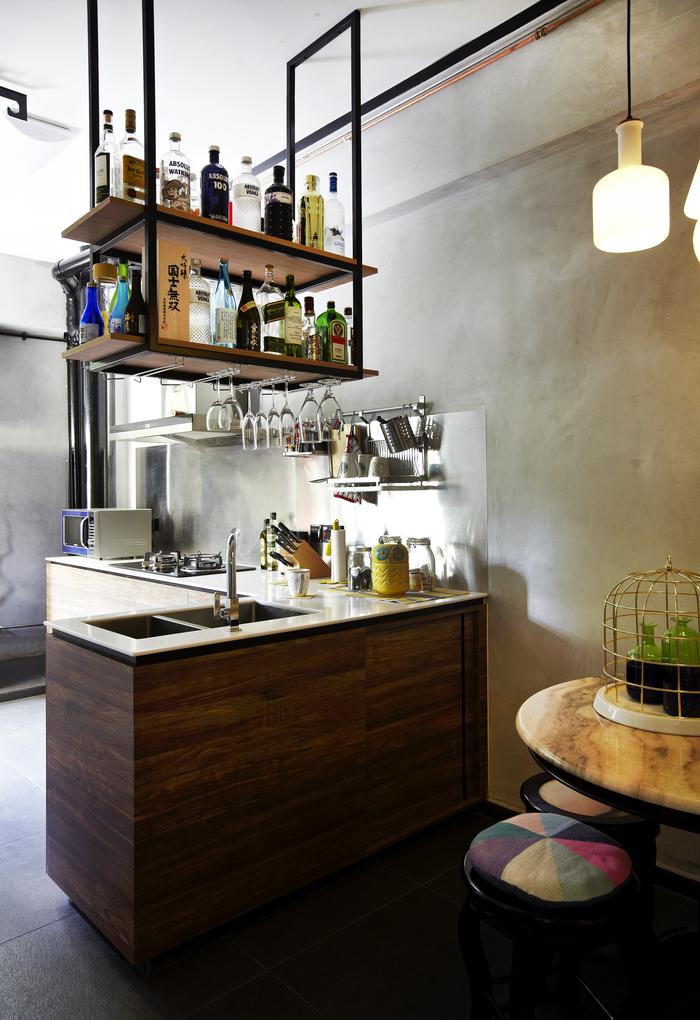
White walls and dark doors are great. It is important that the color of the wood approaches wenge. It is even better if the doors can be made sliding (fusuma).
The white color of the walls of a modern Japanese-style kitchen can be replaced with a different one, but at the same time leave a dark frame finish: skirting boards, doorway lining, beams - this will help preserve the oriental flavor.
When constructing beams, doors and partitions, attention should be paid to one implicit feature. Even in rectangular structures there should not be sharp edges - they are slightly, but rounded, as if worn out from time to time.
The floor is usually covered with wood (orlaminate under dark wood). Ceramic tiles under gray stone are acceptable. The rugs look interesting, with a texture reminiscent of a rough matting (a direct reference to the tatami), but a carpet or a rug is acceptable, of course, only in the dining area, and even there its practicality is questionable.
Furniture with color
Choosing a Japanese-style kitchen set should not be a problem. Open shelves, smooth facades, glazed wall cabinets without binding or with a rectangular crate. The main thing is that the furniture is functional and roomy.

The classic material is dark, almost ebony. Glossy surfaces imitating a thick varnish coating look very interesting. Tables and chairs are stable, rectangular in shape, without roundness and bends.
Alternative finishing of cabinets - in white or other colors. It cannot be said that this fits into the old traditions, but Japanese culture does not stand still either.
Technical innovations in Japanese cuisine
In continuation of the theme of tradition and modernity, we note that the idea of maximum functionality has found support and a new embodiment in advanced technical equipment. An ordinary kitchen in a Japanese house is equipped with technical innovations, including all types of stoves, siphons for drinking water, dishwashers, a dispenser, an air purifier and more.
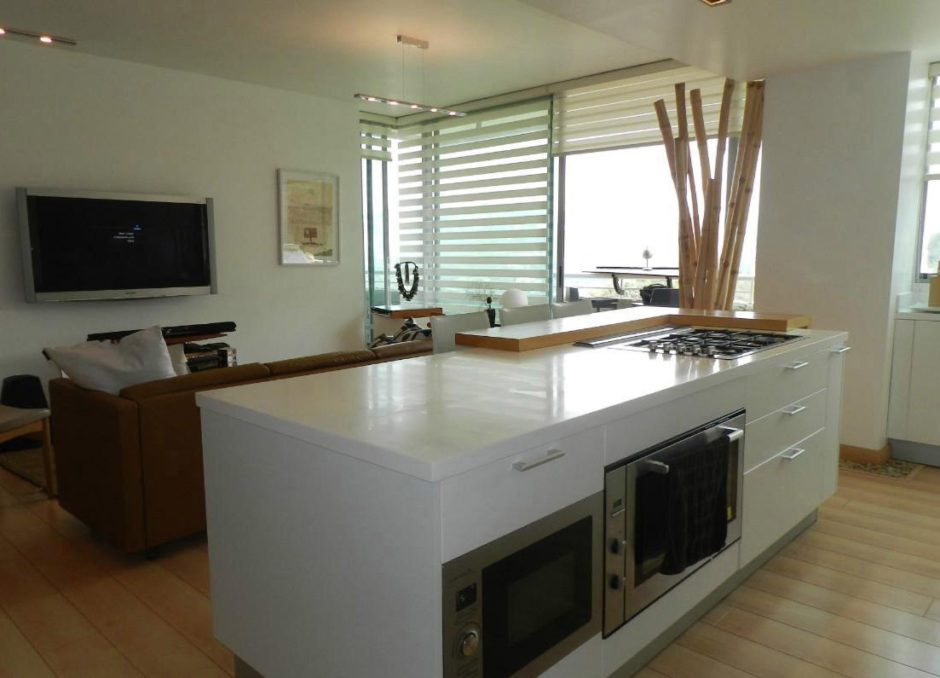
Such an amount of technology cannot but affect the design of a Japanese-style kitchen, which loses its characteristic features and begins to resemble high-tech. Therefore, everything that can be built in is built in, closing the equipment with facades and actively using niches.
The role of natural materials
It is a Japanese tradition to use natural wood, bamboo, rough canvas and paper and stone in the home. The inclusion of these materials in the design of a Japanese-style kitchen ennobles the interior, bringing it closer to the authentic.
The stone is used in the decoration of the floor and apron. A monolithic countertop with a sink is pressed from artificial stone; it is difficult to use natural material here.
Authentic wood furniture and finishes are unvarnished wood. The aged, weathered texture is the best match for the look of a Japanese Edo-era house.
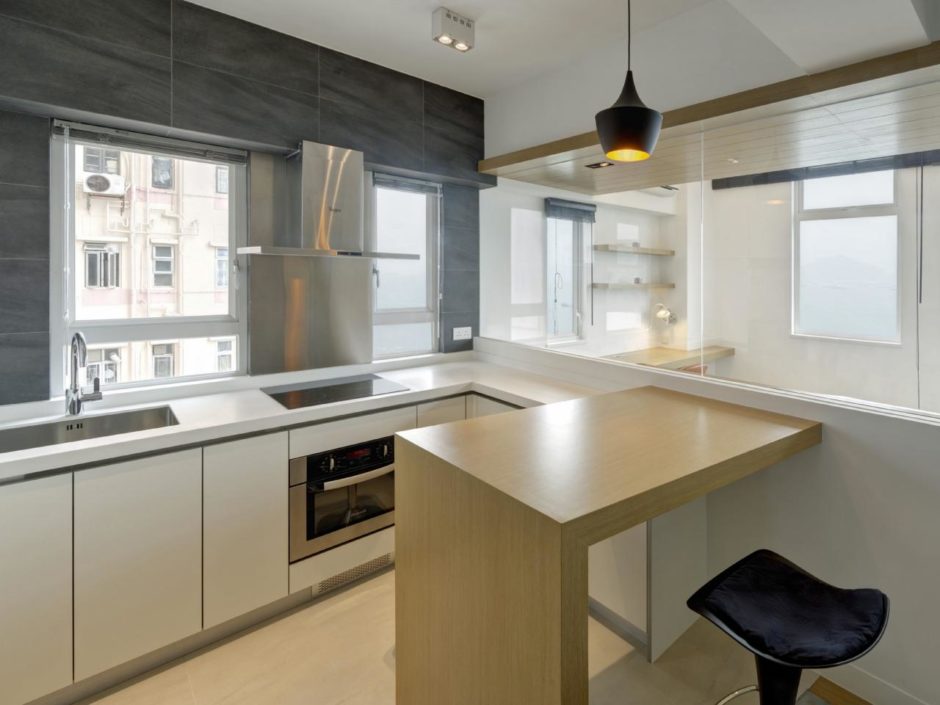
Later, the tree began to be varnished, and this tradition has survived to this day. Visually and tactilely, natural varnish differs sharply from wood imitations.
Bamboo, which was previously used as a structural material, today plays a decorative and applied role. Cutting boards, coasters are made from it - those little things that you cannot do without in the kitchen.
Roll-curtains, lampshades, partitions are made of paper. Sometimes the nmx is patterned or dyed, but often the natural color paper is left. The textiles are also dominated by shades of unbleached linen.

For those who, like the Japanese, appreciate natural beauty and strive to emphasize the traditional features of style, we advise you to use natural materials, rather than imitations, whenever possible. Believe me, this will be noticed, which is also proved by the photos of the Japanese-style kitchen below.
natural light
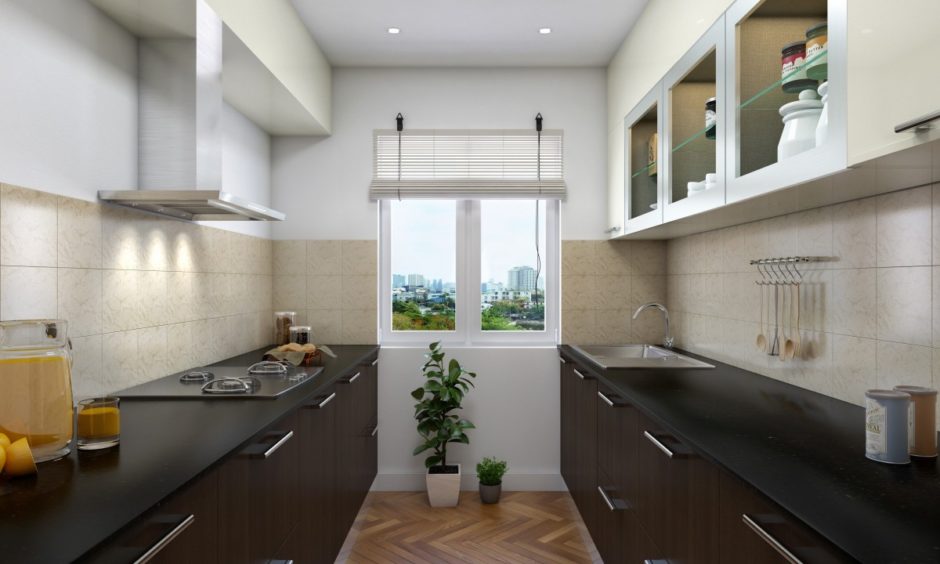
Despite the expressiveness of Japanese lamps and lanterns, they do not play a leading role in lighting the kitchen. Solar lighting should fill the room from morning to evening. The windows are not covered with curtains, blinds or translucent roller blinds are used: even when closed, they do not block the outside world, but leave a feeling of unity with the outside world.
Harmony of wildlife
In search of enlightenment and harmony, let's turn to indoor plants, which are associated with Japanese culture. For those who are not sure of their own agrotechnical knowledge, bamboo can be advised - it develops quite actively and is exotic in an oriental way.
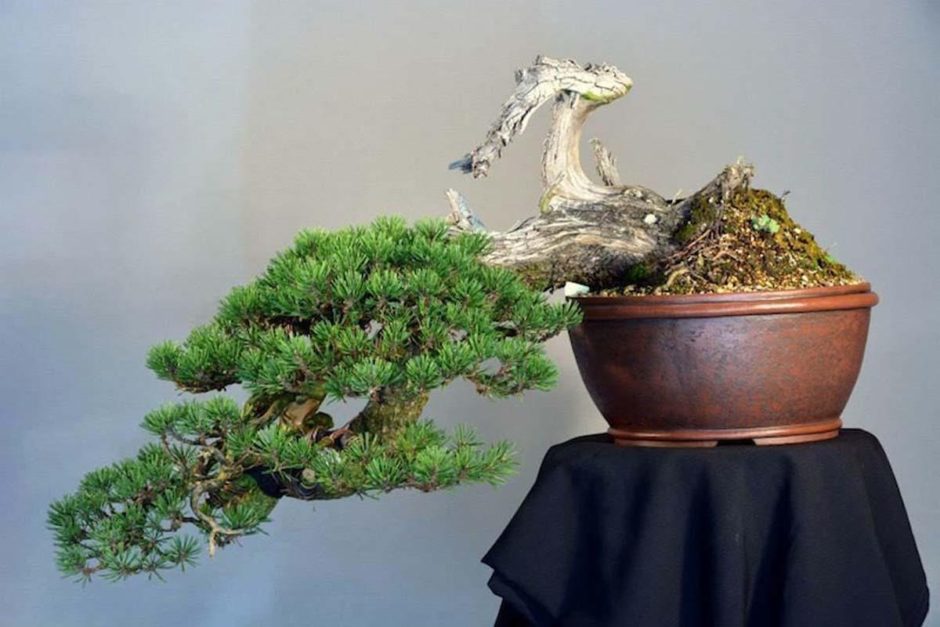
Aerobatics in landscaping a Japanese-style kitchen is, of course, bonsai. Florists offering ready-made, fully formed compositions will help to recreate a corner of Japan. The new owners only benefit from the slow development of bonsai - mini-trees retain expressive outlines for a long time, and with proper care (weak growth gives time to study this issue well) they will decorate the kitchen for more than one year.
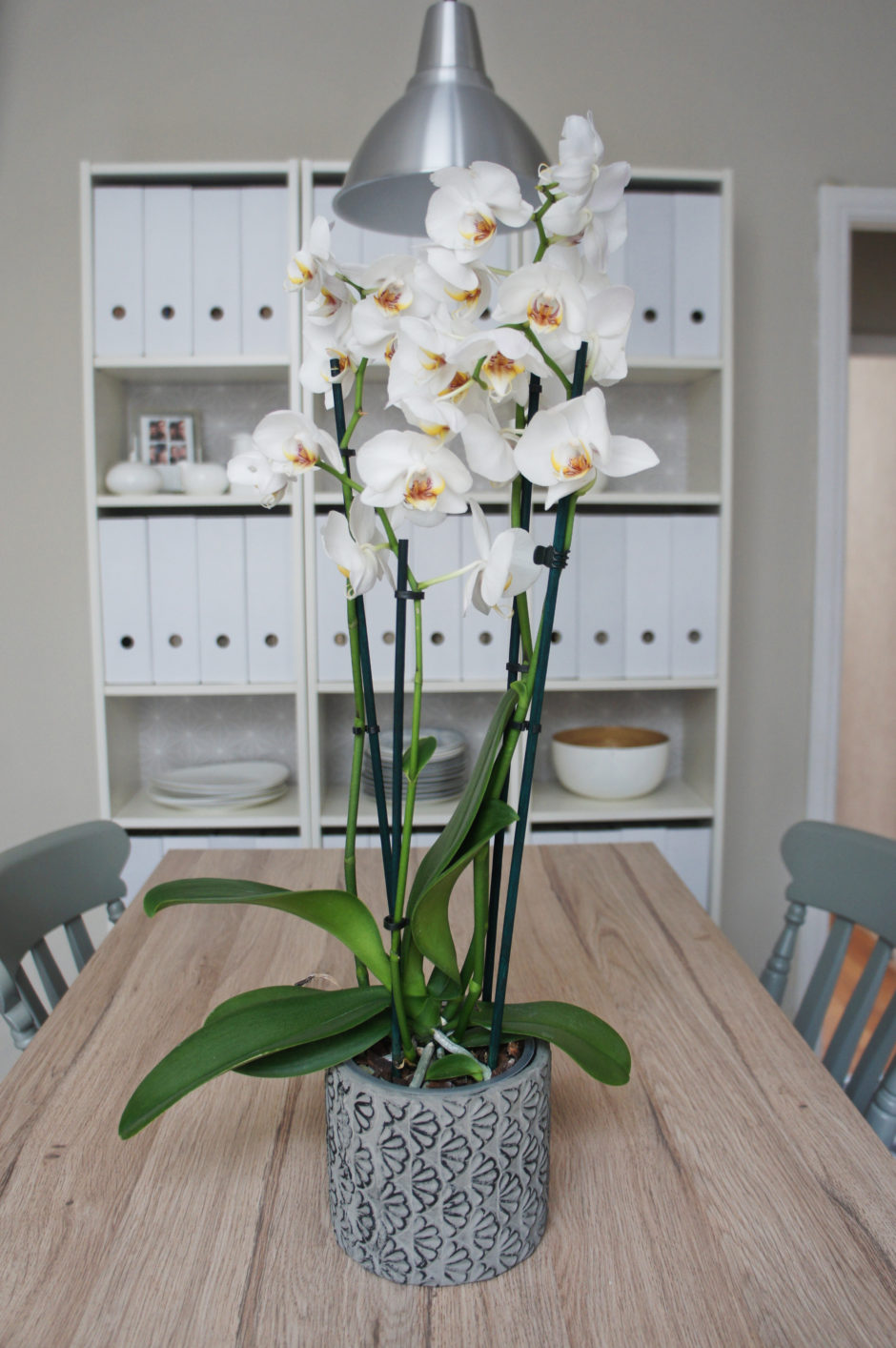
If you are attracted to flowers, then remember: the abundance of flowering plants is not typical for a Japanese home, so you can limit yourself, for example, to two beautiful orchids. One flower is bad, in Shinto it symbolizes loneliness, and although a European may not share the belief, why not take into account the tradition when landscaping a Japanese-style kitchen interior?
How to understand if a kitchen project in a modern Japanese style is successful?
What are the criteria to determine how successful the design of Japanese cuisine is?
First, evaluate the balance of decorative accents. If some details divert all attention to themselves, they must either be removed or balanced. Decorative noise is bad, rhythm is good. The color scheme should be conducive to reflection, the crate or its imitation should set clear boundaries.

Second, check to see if the countertops remain empty. If not, it is necessary to allocate a part of the common pantry for rarely used kitchen utensils and free up space in the cabinets for the on-duty serving set, which usually lingers on the table - a sugar bowl, a kettle, cutting boards, hot coasters, etc.
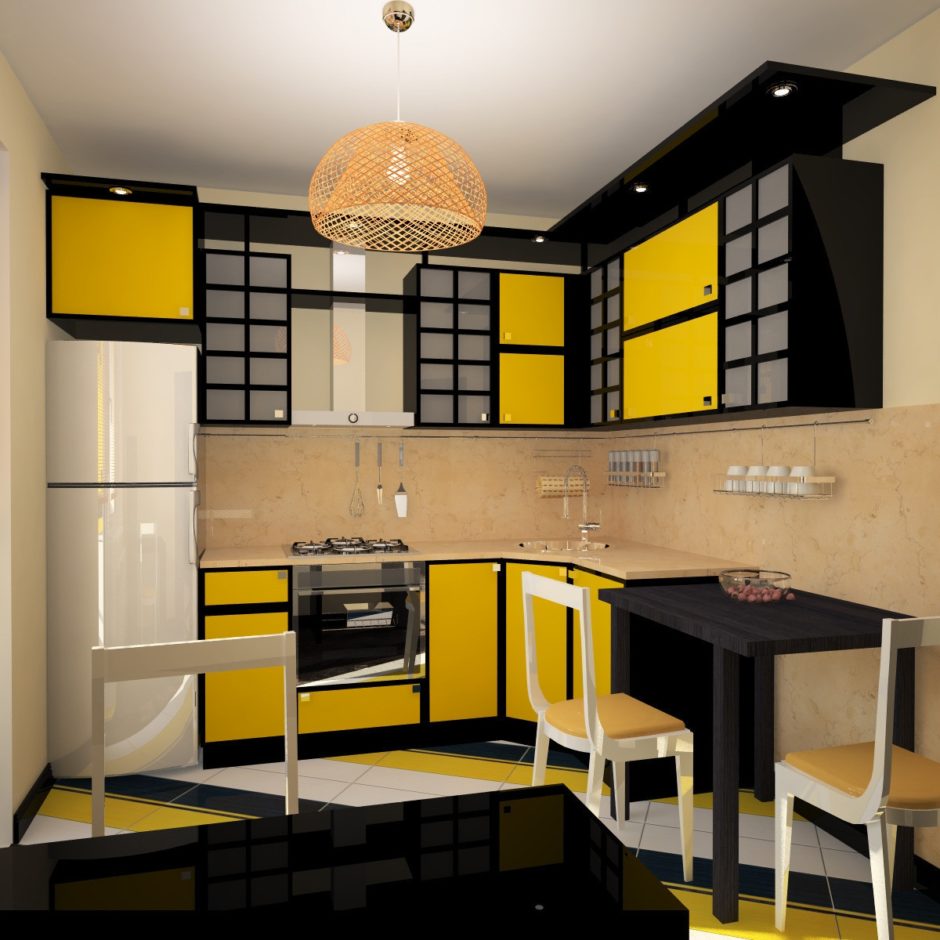
And finally, the third, decisive stage. Do you feel that there is nothing superfluous in the interior of a Japanese-style kitchen? What space is free? That there is harmony in emptiness? If so, then you have a chance to know Zen.
